It is 6 pm on a regular office day.
Meera gets up from her desk, packs her bags, and is ready to leave for home after a productive day at work. Yet she feels uncomfortable on her way out, as some of her colleagues are still at their workstations. A few look up from their screens to wave goodbye to her, but she feels that all those pairs of eyes are judging her for leaving on time.
It’s the same thing every day. She feels guilty for leaving on time and like she is being judged by everyone on the goddamned floor for it.
Or consider the case of Karan – an employee who does not watch Game of Thrones. Every day when his colleagues indulge in full-fledged discussions of the latest episode, he quietly wears his noise-cancelling headphones to concentrate on work. Sometimes eyes are rolled and furtive glances exchanged which seem to question his aloof behaviour – is he an introvert? Anti-social? Or just plain uncommunicative?
What ought to concern Karan more? His work or his workplace environment? He is after all paid to work and just work, and no office environment should make that task any more difficult. He secretly envies what his friend, Amit’s startup boasts of.
Despite having an open seating area, Amit’s office has a series of clustered spaces and breakout rooms, private spaces which can be used at any time by any employee. It even has a library-with bookshelves, couches, and more importantly an unsaid “no-talking” rule!
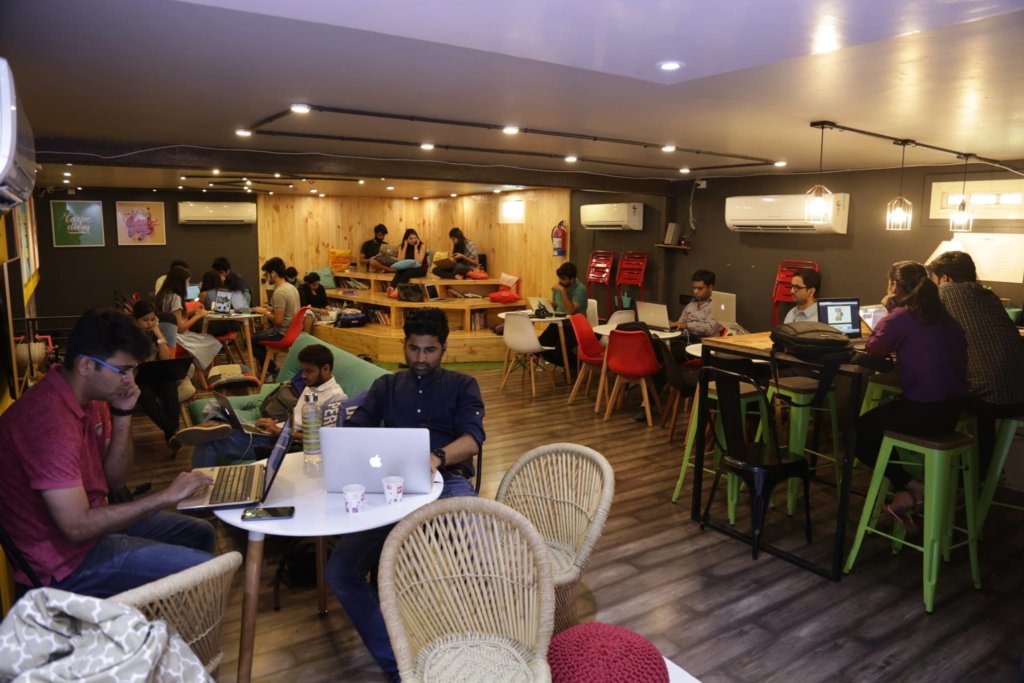
Jennifer Veitch, an environmental psychologist with the National Research Council of Canada states,
“A Workspace should be designed as carefully as you would design the cockpit of the Dreamliner. If you don’t give your employees the right environment, they won’t be able to do what you’re paying them to do.”
This begs the question, Are companies today blindly following the open office trend, when it comes to restructuring their offices, or are they systematically investigating into what best suits their employees? Is it possible that in an effort to efficiently use office space, companies are disregarding the needs of the majority of their employees like Meera and Karan?
Less Cost, More Culture: Why Employers Root For The Open Office Format
The open office trend can be traced back to the 1990s. Responding to new research saying that open work environments fostered community and creativity, employers started hacking away at cubicle walls or even getting rid of them completely. Simultaneously, computers were growing smaller and flatter, thus allowing companies to reduce the size of the workstations. As per data from CoreNet Global, an association of real estate professionals, while an average worker had 225 sq.ft. of space in 2010. By 2017 that figure will fall 33% to 151 sq.ft.
Dinesh Goel, co-founder & CEO, Aasaanjobs states, “Typically, in the initial stages, every startup needs a collaborative work environment and an open office culture helps bring teams together and encourages team work. Going ahead, once the company and its employees mature with time, the staff continues to value deadlines and targets. Thus, all of these factors rest on responsibility and accountability of each resource. If the sense of ownership remains high amongst employees, productivity automatically continues to improve.”
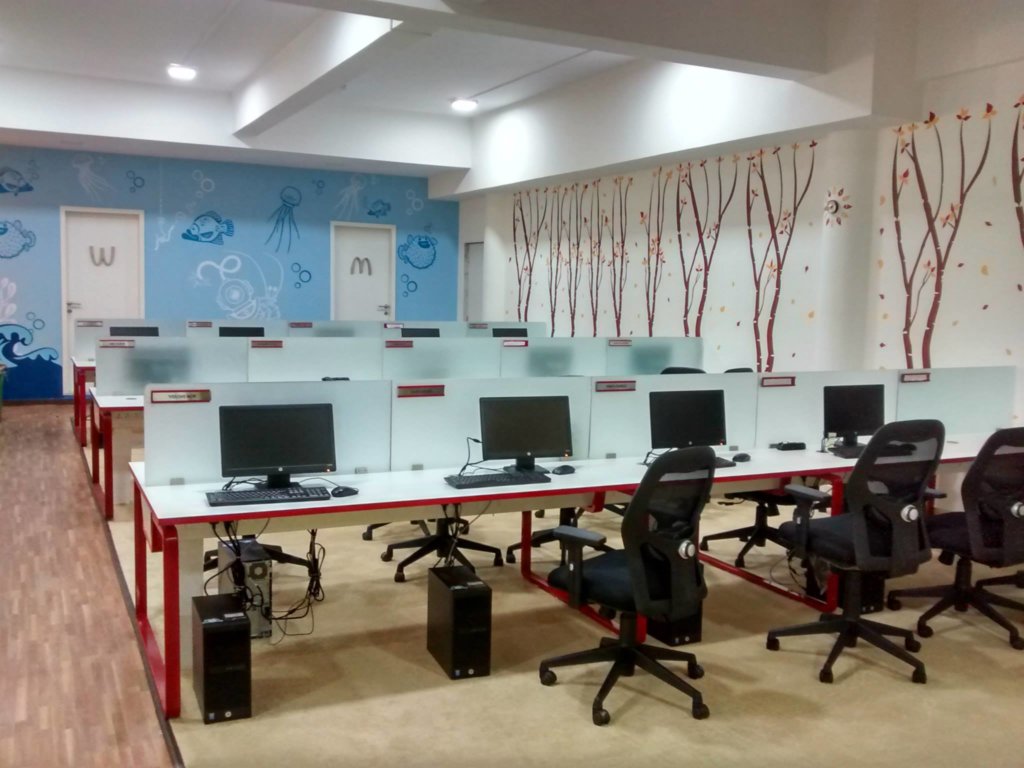
But while employers tout culture and communication as the cornerstone for the open office plan, there’s no denying the fact that cost is an equally important part of the equation.
The Cost Argument
An open office floor plan is significantly more cost-effective in terms of initial set-up, but also for heating, cooling, and cleaning. It utilises the space without the restrictions of permanent walls and doors; it enables packing in more employees, giving employers a better value for their money on their office rental and leases.
Additionally, open office plans allow startups to plan for their growth in numbers and make space for newer employees. In comparison, traditional closed office layouts need to have a limit on the number of individual rooms in the space. It’s no wonder, that startups which are prone to frequent hiring and firing, find the open office format best-suited to their dynamic needs.
The Culture Argument
Undoubtedly, an open office design plays an important role in company culture, affecting employee’s attitudes, expectations, and satisfaction levels, which in turn impact organisational culture. An open office design breaks down hierarchies and fosters a collaborative culture as it makes way for impromptu brainstorm sessions and comfortable group conversations in the spur of the moment. This flexibility is what fosters collaboration and a culture of openness.
Prashant Chauhan, Co-founder of Tolexo vouches for this. He says, “An open office environment fosters a culture of transparency and develops a sense of belongingness amongst employees. This is, therefore, much more preferable than the ‘cubicle’ culture which, by default, is a representation of restriction.”
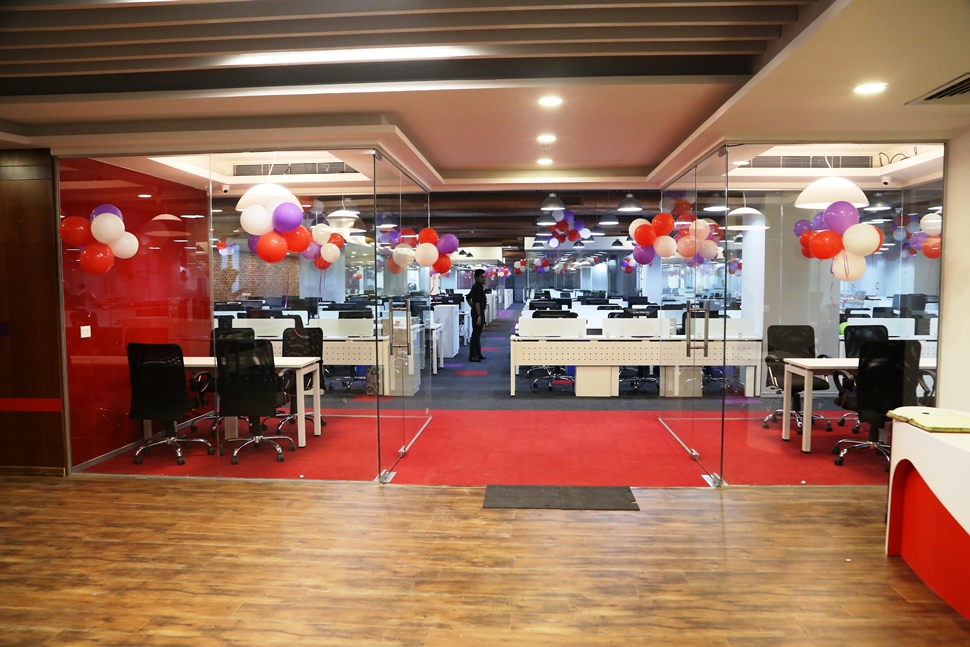
Of course, an added benefit that the bosses love, is the ability to keep a closer eye on their employees, ensuring constant Facebooking and unlimited personal cell phone usage is curbed!
The Communication Argument
Easy communication is one of the biggest benefits of an open layout office space. Employees have the flexibility to discuss ideas, brainstorm, ask for assistance, and thus establish better relations with their colleagues.
As Vignesh Vijayakumar, Corporate Marketing, Freshdesk states,
“Our office was designed keeping in mind that we want it to foster collaboration between employees and teams. Other than your regular cubicles, we also have a lot of standing desks, huddle spaces, and modular tables at various spots in the office. This way, people can have short informal meetings in these huddle spaces as opposed to long-drawn out meetings inside formal meeting rooms.”
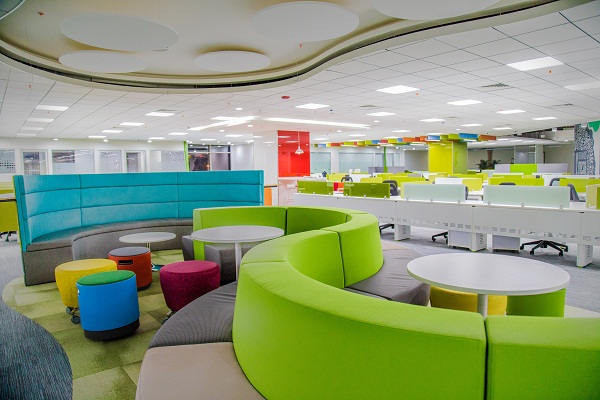
He adds that the environment around you has a lot of impact on how you work. Employees feel comfortable working out of these funky working areas, and their comfort levels directly translate into productivity. He believes that employees don’t see these as distractions – they see them as stress busters, so that they can get their stress levels down and focus on staying productive.
The Marketing Argument
Lastly, open-plan offices are definitely more photogenic because they look busy, and that image sells the startup well, says Fortune. Because ultimately, startups need to communicate the image of efficiency, intense work hours, and 24/7 diligence. And open-plan offices just set the right impression both for marketing purposes and for attracting venture capitalists.
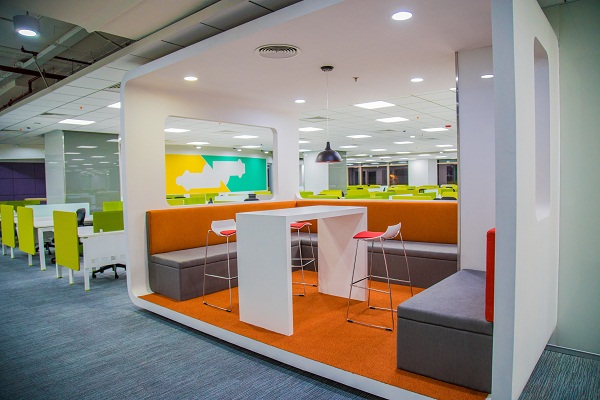
Although research vouches for the fact that letting people work together helps them to interact more easily and thus bind as a company, evidence also suggests that open offices can lead to overstimulation. Distraction and the loss of privacy can have an adverse impact on an employee’s focus and morale, thus impacting overall productivity.
Let’s take a look at some of the common grouses against the open office culture.
Loud, Distracting, Lacking Privacy: Why Open Office Might Not Be As Productive As You Might Think
The one thing that characterises open offices is constant, disruptive noise, emanating from anywhere and everywhere. It could be people brainstorming, cursing, sneezing, talking on the phone, ordering food, or chatting with the boss – the noise doesn’t stop!
Repeated distractions by co-workers such as asking one to watch a YouTube video or discuss the movie released over the weekend or simply the incessant ringing of your neighbour’s phone make concentrating a difficult task!

In fact, according to Harvard Business Review, in a study conducted via Steelcase and Ipsos in 2014, employees in open office spaces missed an average of 86 minutes of productive time due to noise distractions, such as ringing cell phones, loud printers, or a co-worker’s voice.
Absolute Lack Of Privacy
The biggest complaint against open office spaces is that employees have no privacy at all. You are on display at all times, whether you are eating lunch at your desk or taking a client call or a personal call, the whole world can tune into your conversations!
So if someone needs privacy, he is left with no option but to come to work early to get some quiet, focussed time to himself before the maddening crowds rush in. Sometimes, even finding a private conference room to have a private conversation with your boss or manager becomes difficult. Consequently, such plans become needlessly stress-inducing and counter-intuitive to productivity and creativity.
Says Ankur Warikoo, co-founder of Nearbuy, “An open office without a stated operating decorum can soon turn into a noisy, distracting mess. And while it’s fashionable to term this as “startup buzz”, the reality is, over time it has massive, negative side effects.
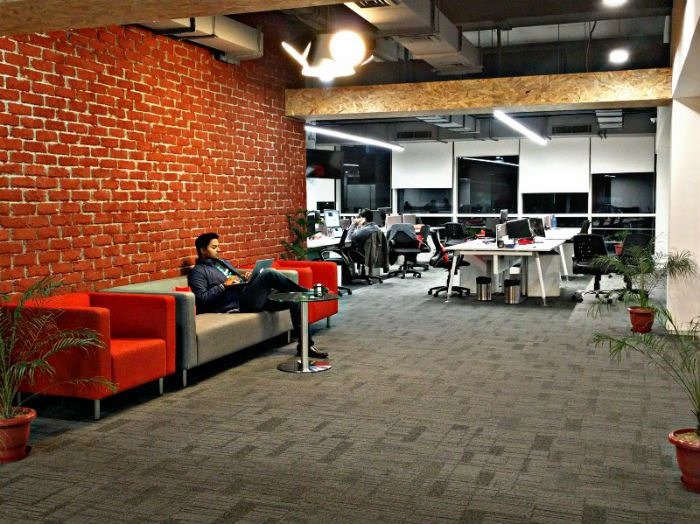
He goes on to share the office decorum at Nearbuy:
- Implicit decibel levels have been identified. It is understood that you cannot raise your volume levels.
- Any conversation between three or more people has to be in a meeting room, which is why they have over 25 of them.
- At Nearbuy, there is respect for personal space and time. Wire-ins are encouraged, where one can listen to music, or just have noise-cancelling headphones on. It is not considered rude.

The Curious Case Of Peeping Toms!
There will always be people peering into your monitor – intentionally or unintentionally. And, God forbid, if you are shopping or checking personal mail! Your life becomes an open show while at work and everyone knows everything. So even if you want to de-stress a bit by browsing, be warned that the whole world will know about it.

What If You Don’t Want To Talk?
Now if one genuinely doesn’t want to talk and concentrate on his work and chooses to ignore these constant interruptions, you might be looked upon as aloof, introverted, uncommunicative, or even anti-social. Sometimes you have to give in and indulge in these disturbances so that people don’t label you!.
And what if one is genuinely having a bad day and needs a moment to himself? Damned if you can find that moment in an open office space – be prepared to find a place hiding in the stairwell or on the rooftop.
On the other hand, imagine having to sit with a boss who never talks to his employees. This kind of forced communication scenario would hardly help any cause!
From Cubicle Walls To Noise-Cancelling Headphones
Sometimes, open offices overstimulate employees so much so that in order to focus, most employees have no recourse but to wear headphones all day long to work in peace. Even those not used to working with music, have no way out unless they are able to manage a quiet meeting room for themselves. So instead of the collaborative workspace it is supposed to be, the office is filled with headphone-wearing people, who have tuned out of the office environment to do productive work! Hardly the objective which employers aimed to achieve with the open plan.

While employees feel like they’re part of a laid-back, innovative enterprise, the environment ultimately impairs their attention spans, productivity, creative thinking, and satisfaction. Thus, if employers want to make the open office model work, they have to take some measures to improve work efficiency so that culture does not come in the way of work.
Different Strokes For Different Folks
Employers may want to increase team communication by removing walls, but not all teams need to communicate with each other. Maybe it is a good idea to keep your IT and Creative teams huddled off in a quieter space so that they can work without interruption.
Dhruvil Sanghvi, co-founder of LogiNext stresses the same point. He says,
“Having an open office is easier for smaller teams than for larger teams as inter-team interaction sometimes takes up a lot of time and too much information flow between departments causes stress and conflict. For example, sales and technology teams are usually very different in their thought process, working hours, and rewarding mechanisms. Although transparency across these teams helps in better product understanding of sales team and better business understanding for technology team, it creates some hidden issues which come to light once the damage is done.”
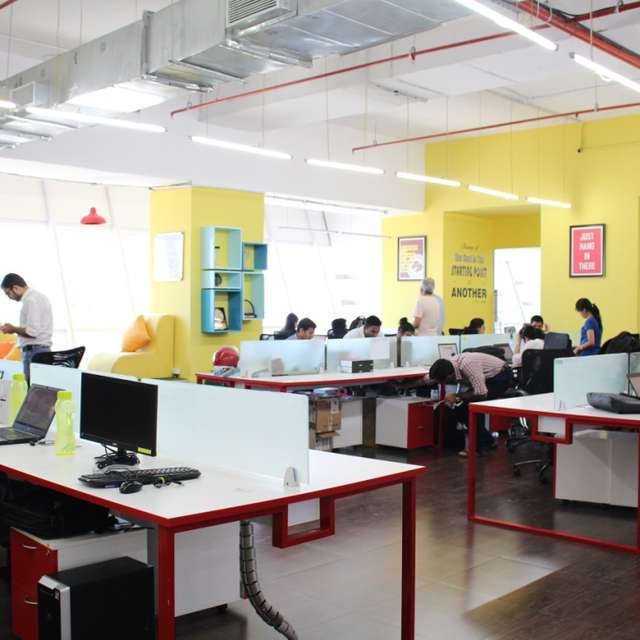
He points out a recent example at LogiNext, where a few sales managers used to go and influence the developers to develop something custom and unique to meet the immediate need of a particular enterprise client. “Later we figured out that it had impacted overall product performance as the overall code had become suboptimal leading to a bigger negative impact. Another example is in how these teams get rewarded. Sales teams are usually driven by customer pressure, high-expectations and monetary bonuses based on sales targets. On the other hand, technology team thrives more in a low-pressure and a secured career growth environment. Complete transparency across these teams can also create distraction and stress,” he adds.
However, he believes that on the positive side, an open-office culture within teams is extremely important and healthy, even for large organisations. Though large Indian organisations still have more of a closed environment, they are opening up to changing with the times.
The Best Of Both Worlds
Startups should remember people don’t just want privacy to discuss things. Sometimes all they want is to work without eyes on them. Hence, companies can design a variety of meeting rooms, secluded clusters, closed-off spaces for quiet tasks and meetings, along with standing and sitting workstations to make employees comfortable and more productive.
Concurs Sachin Bhatia, co-founder, TrulyMadly, “While we have an open office, there are enough niches and break-out areas for alone time or for smaller groups to get together. Over all, sitting together sensitises folks/departments/teams to problems others are facing, issues, challenges etc. and that is great for team work.”

Employers also need to remember that there is no one-size-fits-all solution. Some teams may do better with open plan to allow for quick communication, some with breakout rooms where groups of workers can concentrate on specific projects, and some which handle sensitive information, may need more privacy than others.
Harshil Mathur, CEO and co-founder, Razorpay, says, “As a startup, we want our office to reflect a young, quirky, and vibrant culture. While laying out the office plan, we concentrated on having a hexagonal layout to stimulate openness, collaboration, visibility, and communication. Being a tech company, we understand that some of our work can be overwhelming. By having employees sit side by side, it breaks the rigour at work. We also have silent rooms and colourful ledges by the window apart from the usual desk space.”
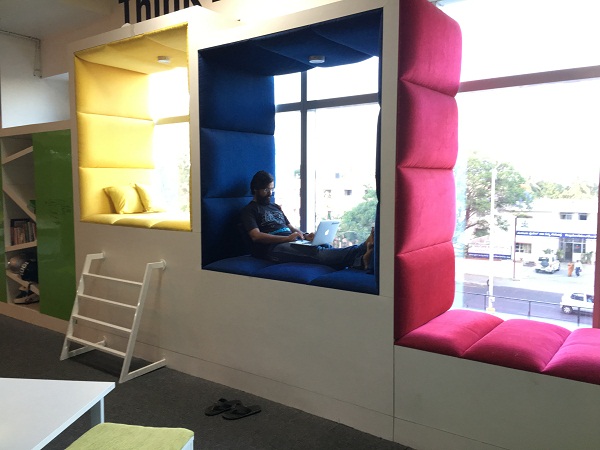
Also incorporating spaces such as a recreation room, a nap room, and even a sound-free library space helps employees de-stress and spring back to doing what they are expected to. It’s no wonder that Facebook’s New York office too offers a quiet “library” space.
Employers should implement rules on when interaction should be limited. For instance, when a colleague has headphones on, it should be a sign that you should come back another time. Or better yet, email or IM him.
For employees, they should learn to make the best of their open spaces by diligently taking breaks to recharge, booking a meeting room on a semi-regular basis to do important tasks, using headphones when they don’t want to be disturbed or maybe even putting a ‘Do Not Disturb’ sign on their desks!

Thanks to social media, our attention spans have already shrunk drastically from what they used to be. We need to limit the added burden of overstimulation at work places in order to maximise productivity. So, the next time you feel like you don’t want to indulge in any further discussions on ‘Jon Snow’ or Man U versus Liverpool, but would rather finish off that sales presentation, don those noise-cancelling headphones, or better still dash for that quiet meeting room without feeling guilty!
After all, it’s an ‘open office’ culture and the first culture to respect openly is that of hard work.




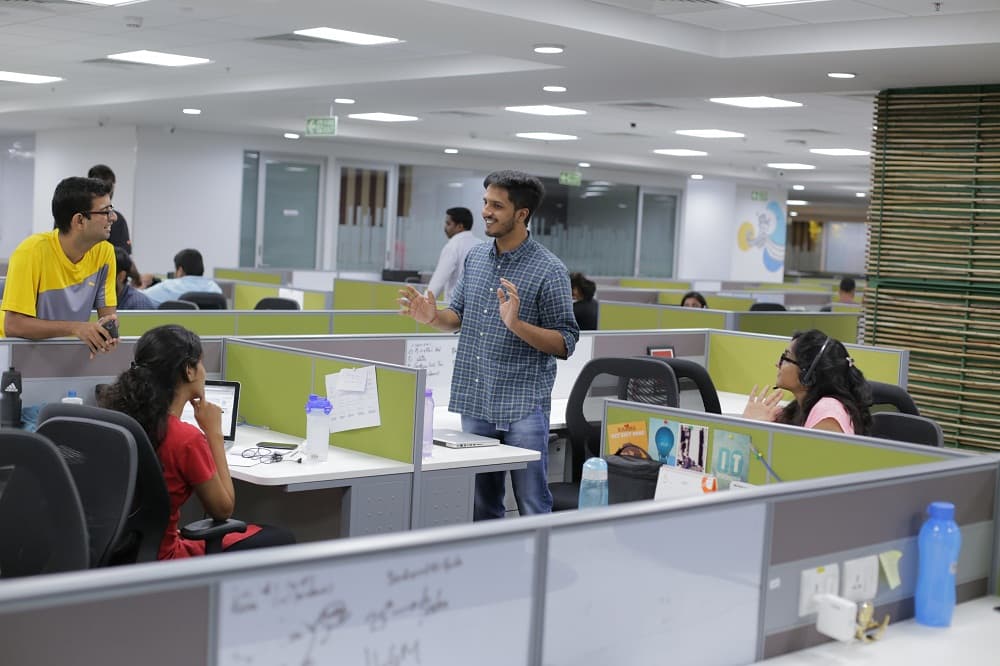







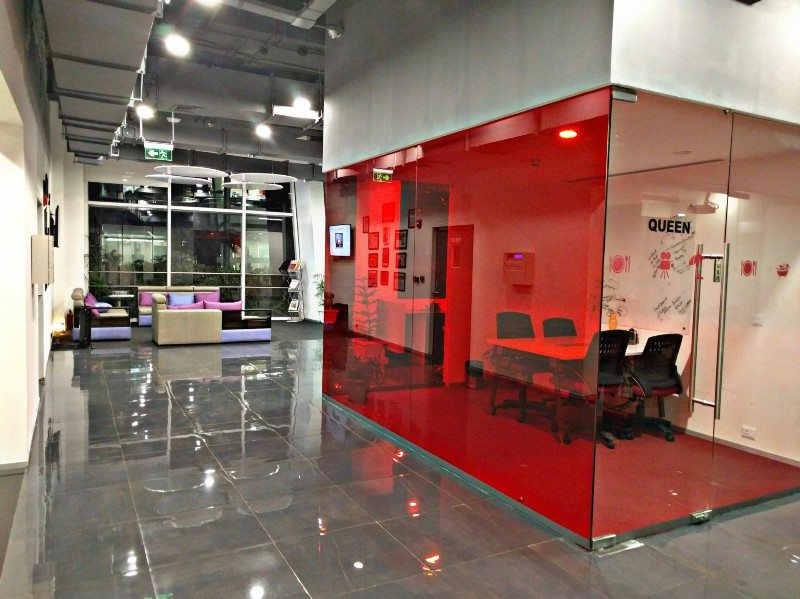




















 Ad-lite browsing experience
Ad-lite browsing experience